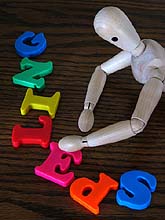Dyslexia Statistics

Many researchers have different definitions for dyslexia, and people with learning disabilities often have overlapping conditions. As a result, there is much confusion regarding the incidence of dyslexia.
Spafford and Grosser estimate that at least 2-5% of the U.S. population has dyslexia. However, other researchers think the percentage could run as high as 15%. According to Lyon, about 10 million children or around 17% have reading difficulties. Approximately 80-85% of children identified as learning disabled for special education services have their primary problems with reading and language.
Some believe both males and females are approximately equally at risk for dyslexia; however, girls are not identified as often as boys because boys are more likely to have behavior problems when they have trouble learning. But, according to a Mayo Clinic study of 5,718 children in Rochester, Minnesota, boys were two to three times more likely than girls to be affected by reading disabilities.
|
Edublox programs are effective in overcoming dyslexia, dysgraphia and other learning difficulties by addressing the underlying shortcomings that interfere with academic performance.
|
|
